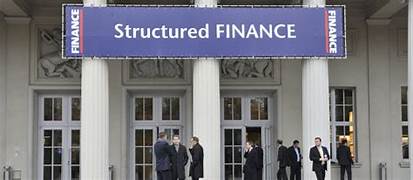TRENDING WHITEPAPERS,VIDEOS & MORE

matt
DeFranco's Five Predictions and One Wish for 2019
- Friday, 11 January 2019

By Dr. Ralph G. DeFranco
The only thing that can be said with certainty is that everything changes.
Even though uncertainty is a given, here are a few predictions on how I see the housing market evolving during 2019 – along with my one wish for the new year.
1. Home prices will increase, with only minor exceptions. A housing shortage coupled with a strong job market should keep the current housing market slowdown from getting out of hand. It follows that since the strong economy is widespread, home price growth is likely to be widespread as well, even in the face of rising interest rates. While the national average home price is likely to increase 2 percent to 5 percent next year, regional home price changes will vary widely based on local supply and demand conditions. Areas likely to do well include retirement areas near water and metros popular with professionals and foreign buyers, such as coastal international hubs. At the other extreme, some limited and short-lived price declines would not be surprising as housing markets rebalance and adapt to higher interest rates. The areas most at risk of price declines are the extremes in both directions: metros with the hottest markets in recent years, some of which may have gotten ahead of themselves, and regions that already have relatively weak housing markets, including both legacy industrial centers and economies dependent on energy extraction, such as Alaska, North Dakota and West Virginia.
2. Millennials drive the hottest markets. The most rapid home price growth is expected to occur in the areas most desirable to Millennials. These include neighborhoods in, or close to, downtowns and vibrant areas near universities. It is worth noting that these areas have done better than average in recent decades. That has been true during both booms and busts, at least in “magnet” cities that are attracting workers from other areas, such as Washington D.C., Seattle and Denver. This trend continued in 2018, with above-average home price growth in the ZIP codes with the most Millennial buyers. This makes sense, given that Millennials now dominate the first-time homebuyer market.
3. Credit risk will increase. Lending guidelines may continue to gradually loosen (and yet still remain vastly better than during 2005–2008 thanks to the stricter regulations that were put in place after the housing market collapse). When you combine more relaxed guidelines with the trend to higher debt to-income ratios and loan-to-value ratios, which is mostly driven by worsening affordability, it’s easy to see why credit risk will continue to increase.
On top of that, credit risk from economic factors may be higher since some forecasters are starting to think we could be in or close to a recession in 2020 due to the way current tax and spending laws are structured. One implication of any loosening at the margins would be increased housing demand (all else remaining equal), particularly for starter homes.
4. Housing affordability will continue to worsen. Both interest rates and home prices are forecasted to increase, hurting affordability. With unemployment at peacetime historic lows and the tax cut adding an oddly timed and only temporary stimulus, the Federal Reserve needs to continue raising interest rates. For one thing, the inflation rate is expected to trend upwards (wage growth increased from 2 to 3 percent over the past year and makes up the majority of product costs). Even though higher interest rates reduce home sales, modest increases in mortgage rates are not as apocalyptic for housing as many believe. Rising rates historically only caused temporary, mild slowdowns in home sales, ranging between 5 to 10 percent.
The potential implications of higher interest rates in 2019 include the following scenarios:
- Total originations fall due to fewer refinancing loans.
- Longer loan life. Loans with low mortgage rates will stick around on investors’ portfolios longer than usual.
- Fewer trade-up home sales, keeping inventory tight. This will negatively impact home ownership rates, affecting Millennials the most.
5. No bursting housing bubble. Why? Because there is no widespread housing bubble. The typical warning signs--excessive debt levels, poor quality loans, exponentially increasing home prices, rising vacancy rates and a high number of internet searches on house flipping--are not present. The one warning sign flashing red at the moment is poor affordability compared to the past in many metros. But the trend of firms to concentrate in denser cities, together with interest rates lower than the historical average, suggests that high home prices are more supportable than 10 years ago. Last, my 2019 housing wish is for more construction of entry-level homes. The demand is certainly there and the high end of the market is fairly saturated (as suggested by much slower home- price growth in recent years).
About the Author: Dr. Ralph G. DeFranco is the global chief economist for Arch Capital Services. This article first appeared in the winter edition of “The Housing and Mortgage Market Review” from Arch Mortgage Insurance Company.
Read more...
SFIG Picks Ex-Ginnie Exec to Lead Advocacy, Other Efforts
- Friday, 11 January 2019

The Structured Finance Industry Group Inc. has selected Michael Bright to serve as president and CEO.
Bright will lead SFIG's education, policy and advocacy initiatives, helping to achieve the group's goal of building the broadest possible consensus among members across the industry, and reinforcing the understanding that securitization is an essential source of core funding for the real economy. He will assume his new position on January 21 and report to the trade group’s board. SFIG is a member-based trade industry group that works to improve and strengthen the broader structured finance and securitization markets.
Bright has extensive experience as a practitioner and leader across all aspects of the securities industries. He joins SFIG from Ginnie Mae, where he was executive vice president and chief operating officer, managing all operations for Ginnie Mae's $2 trillion portfolio of mortgage-backed securities.
Also, he has experience as a policymaking from his time on the staff of Senator Bob Corker, R-Tenn., and the Senate Banking Committee. Prior to joining Ginnie Mae in 2017, Bright was a director at the Milken Institute's Center for Financial Markets, where he led the institute's housing program. He was a member of BlackRock's financial advisory unit.
"The securitization industry plays a fundamental role in our economy and it is vital that policymakers and the industry work constructively together as the market continues to evolve,” said Bright. “I am honored to join the SFIG team and see tremendous opportunity to build on this group's success as the voice of securitization. I look forward to working with all of our members to represent the diverse views of this critical field and continuing to provide meaningful education, advocacy and connection for our members across all aspects of securitization."
"On behalf of the SFIG board, I am very pleased to welcome Michael to SFIG. His hands-on leadership experience in the financial markets and expertise with legislative and policy initiatives will be a significant asset for our members," said Howard Kaplan, chair of SFIG's board. "SFIG has established itself as an important industry voice thanks to the hard work, commitment and dedication of our member organizations, Operating Committee and staff, and Michael's proven ability to deliver results both in the public and private sectors make him a natural fit to lead SFIG in continuing that momentum."
Read more...The Money Source Sells its Originations Biz to AmeriSave
- Wednesday, 09 January 2019

The Money Source has sold its originations business to AmeriSave Mortgage Corp.
The projected originations volume will be $1.5 billion in 2019. As part of the terms of the agreement, AmeriSave assume The Money Sources' new Plano, Texas, and Chandler, Ariz., offices. The Money Source will transition the originations business to AmeriSave in first quarter 2019.
[caption id="attachment_8999" align="alignright" width="200"] Darius Mirshahzadeh[/caption]
Darius Mirshahzadeh[/caption]
“This is a perfect fit. AmeriSave brings years of delivering a truly exceptional, tech-forward experience to homeowners during originations as we do atThe Money Source in servicing customers for the life of the loan,” said Darius Mirshahzadeh, CEO of The Money Source. “We feel good knowing that they will take great care of our customers and our people while we double down on being the world’s best servicer.”
The sale of its originations business is a strategic move forThe Money Source, enabling it to focus on its customer service platform--Servicing Intelligence Made Easy. The Money Source is a top-15 correspondent investor. For AmeriSave, the acquisition marks the company’s efforts to scale its loan originations business.
“We are excited to welcome theThe Money Source originations team and business to AmeriSave,” said Mike Berte, president. “While we had a strong 2018, this acquisition kickstarts 2019, allowing us to expand our market share, add talented mortgage professionals in two terrific markets, and help more people realize the dream of homeownership.”
According to AmeriSave, over the past 10 years, it has invested heavily in its propriety technology, creating a highly automated loan originations system that removes the friction that customers typically experience while obtaining a mortgage.
Many borrowers opt to “self-serve” all or most of their loan transactions with this intuitive software that drives speed and reduces the cost to produce a loan.
In turn, AmeriSave passes this savings along to thousands of customers each month. It plans to attract top talent and consider more acquisitions in a bid to grow its originations volume.
The shift away from originations providesThe Money Source subservicing and correspondent clients with additional partner programs and technology that will advance its service offering, maximize clients’ portfolio retention and amplify customer lifetime value.
Beyond SIME,The Money Source has patents pending for artificial intelligence, block chain as well as new versions of its one-of-a-kind servicing app scheduled for 2019. The company also plans to expand its client partner programs with custom apps, websites, as well as marketing and compliance consultative services.
Read more...

